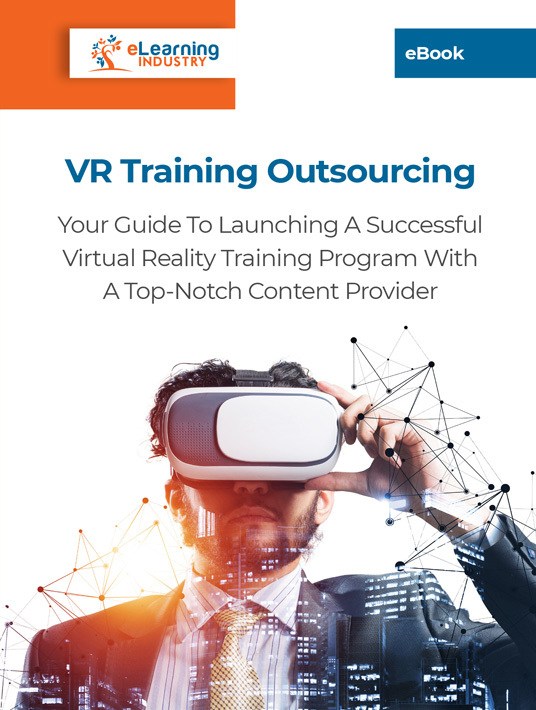Limiting The Expenses Of Virtual Reality Training
Virtual Reality gives employees the chance to soak up information and learn the error of their ways in a safe setting. Or identify hidden talents they can use to benefit the business and boost on-the-job productivity. But the goal is to give them the skills and experiences they need in VR environments. Then turn them loose in the workplace to apply what they learned. So, how do you tip the payroll scales to give them more hours on the job and less in ILT courses? Here are 6 insider secrets to lower training expenses and make long training sessions a thing of the past.

1. Focus On Singular Skill Application In VR Simulations
Things get out of hand when you try to squeeze too much content into one online training session or activity. Focus on a single skill or task in your Virtual Reality employee training simulations. Give employees the chance to experience the skill firsthand and see how it relates to their job duties. For example, build empathy skills with a customer persona simulation. Let employees listen to the problem and find a compassionate solution that meets the customer’s needs. They can return to this VR simulation time and again to hone this ability and explore a different perspective or to test related skills. For instance, they can actively listen to the customer and analyze their non-verbal cues to empathize with their situation.
2. Use VR Converters To Repurpose Demo Videos
You may already have training videos that easily convert into VR demos. You don’t need to develop fresh online training content to create immersion. Limited resources shouldn’t prevent you from reaping the benefits of Virtual Reality employee training. Not when there are budget-friendly VR converters to help you transform 2D into 3D L&D videos. Just make sure you know which headsets you’re going with before the online training content conversion. The sets and converter software must support the same output formats.
3. Let Employees Pick And Choose Activities With Interactive Maps
Employees don’t have time to cover all the compliance issues or job tasks in one sitting. Unless, of course, you want to enforce marathon online training sessions that lead to cognitive overload. Develop interactive VR maps that let employees pick and choose their next activity. For example, click on the customer service route and work their way through every skill-based simulation at their own pace. This is particularly useful for moment-of-need support. Employee training participants access the map in the middle of a task or after they uncover a performance gap on the job. Then they can access points to get the info they need and apply it right away.
4. Launch A VR Support Library
Create a Virtual Reality support library that features hand-packed JIT resources. The menu can also be VR-enabled. For example, an employee runs into a problem in the workplace. They quickly slide on the headset, tap on the online training tutorial or video demo they need, then immerse themselves in a task walkthrough. It’s distraction-free, which means they can concentrate on the process and rapidly absorb the information. They can handle challenges on their own instead of getting a manager involved. This also makes them more confident and self-assured. Start small to save money—and seat time. Focus on a handful of gaps or common issues in every department. You can always include supplemental links to online training resources in the LMS if employees need more info.
5. Host ILT Virtual Reality Sessions
ILT training takes time. It’s not just the hours spent in workshops, taking exams, or listening to presentations. You have to factor in travel, follow up refreshers, and other training tasks. This also puts a dent in your budget and decreases employee retention. Virtual Reality allows you to host ILT sessions in real time without any flights, hotels, or rented venues involved. Employees use video conferencing software and VR headsets to interact with their instructors and get one-on-one support. Or they engage in group discussions that facilitate knowledge sharing within the organization. You can even record the live sessions, add effects, and convert the 2D content to boost the immersion. This may compromise the real-time interactivity, however, social media groups, hashtags, and PM platforms bring back the collaborative benefits.
6. Outsource To Rely On eLearning Content Provider Expertise
You’re trying to reduce costs, so why would you even consider hiring an online training content provider? Outsourcing VR training may seem counter-intuitive but think of the expertise they bring to the table. This translates into higher-quality content, less development time, and condensed activities that still cover all the essentials. A vendor knows how to deliver the information in a way that’s easy for employees to understand and remember. They use the power of immersion to grab employees' attention and improve knowledge assimilation. That said, you need an online training content provider who specializes in your industry and training topic, with a firm grasp of the subject matter and VR technology. They must understand the unique requirements and challenges your organization faces as well as what information employees need to mitigate risks and perform at their peak.
These Virtual Reality employee training techniques keep seat time to a minimum and cut online training costs. However, I saved the best for last. One of the best ways to reduce L&D spending is to evaluate your current online training content from a VR POV. Repurpose what you already have and use a rapid eLearning authoring tool to add triggers, effects, and other engaging elements. This reduces outsourcing expenses since you’ve already improved the aesthetics and interactivity. Less work for the content provider means more money in your company’s pocket.
You can launch your own successful VR training program with the right eLearning outsourcing partner, regardless of the resources and size of your business. Download the eBook VR Training Outsourcing: Your Guide To Launching A Successful Virtual Reality Training Program With A Top-Notch Content Provider and find out how to warrant your investment while boosting your employees’ performance and self-confidence.








